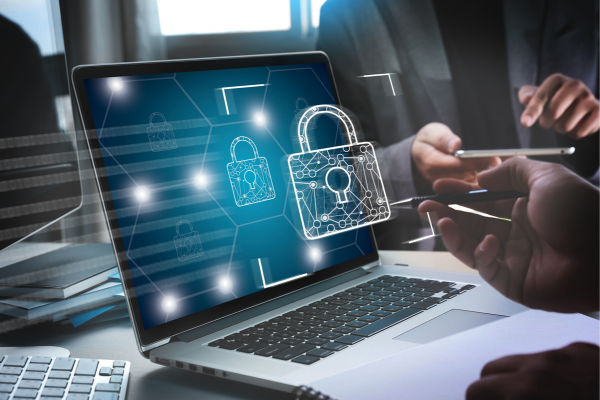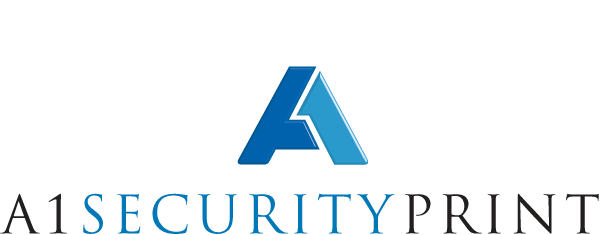This website uses cookies so that we can provide you with the best user experience possible. Cookie information is stored in your browser and performs functions such as recognising you when you return to our website and helping our team to understand which sections of the website you find most interesting and useful.

Beyond the Visible: Exploring the Hidden World of Security Printing
January 15 2024Imagine a banknote or any official document in your hands. Have you ever wondered how these everyday essentials stay secure and reliable in a world teeming with technologically advanced falsification methods? Welcome to the captivating world of security printing – the unseen hero in our daily transactions.
Understanding Security Printing: What It is and How It Works
Security printing emerges from two key different aspects: creativity and the science of safeguarding high-value documents from falsification, ensuring that each document can be authenticated and trusted. The application of security printing features for each document is determined by the specific purpose of that document and the level of security required to protect it. The protection itself lies in a carefully designed set of overt, covert, and forensic security features.
Overt Features. Overt features are the primary level of visible defence mechanisms in security printing. Readily visible to the naked eye, overt features facilitate swift verification without necessitating special equipment. To illustrate, consider the holograms on your credit card or the watermark on your travel document – these are classic examples of overt features that are both visible and, in many cases, tangible. Designed for instant recognition, they swiftly draw attention to the document’s authenticity.
Covert Features. Covert features take security a step further and are essential in advancing document security, as they are not immediately visible and typically require specific tools or conditions for detection. In practical context, the covert feature would be printing very small text, often too tiny to be read without a magnification glass, or using special inks that are only visible under ultraviolet light. These features play a crucial role because they are more challenging for counterfeiters to duplicate, thereby providing an extra layer of security.
Forensic Features. Forensic features constitute the most advanced tier in security printing. These most sophisticated elements necessitate specialised equipment and expert knowledge for accurate detection. Practically, forensic features might include complex chemical formulas, sophisticated material properties, or distinct molecular markers, employed in scenarios demanding the highest level of security. They are particularly crucial in high-stakes contexts such as immigration visa stickers and essential government documents, where exceptional security measures are indispensable.
The careful selection and combination of these features are what make security printing such a critical and exciting field. It’s a constantly evolving discipline, blending technology, science, and art to stay ahead of counterfeiters and ensure the integrity of our most important documents.
Discover the Critical Role of Security Printing in Today’s World
In an environment increasingly threatened by financial fraud, identity theft, and counterfeiting, security printing stands as a crucial shield. It safeguards the integrity and confidentiality of essential documents and products, playing a vital role in protecting individuals, organisations, and governments. The challenge is vast: counterfeiting alone costs the global economy 2.5 million jobs and up to $4.5 trillion annually. This makes counterfeiting a major global economic force, exceeding Canada’s GDP and closely trailing Germany’s. The urgency for advanced security printing is undeniable (Forbes Business Council, 2022).
Facing these challenges, we delve into the multifaceted world of security printing, exploring its essential role across various sectors. From reinforcing trust in daily transactions to authenticating government documents, upholding examination integrity, and securing our financial systems, every aspect of security printing is crucial. It underscores the field’s indispensable value in our interconnected society. Let’s explore how security printing profoundly impacts and enhances our daily lives.
Building Confidence: How Security Printing Protects Trust
In our digitally advanced era, the significance of security printing in safeguarding physical documents such as government papers, qualification certificates, and banking materials cannot be overstated. Security printing serves as a vital defence against fraud, enhancing public trust and integrity, and has a long-standing history in combating counterfeiting and forgery. Moreover, security printing extends its impact beyond document protection, creating a broad sense of security and trust in daily interactions. Employing a range of techniques, from specialised papers to reactive inks, security printing plays a crucial role in verifying the authenticity of everyday items. This often-unseen layer of security is fundamental in maintaining trust and authenticity in our complex world, subtly reinforcing confidence in the daily operations of many people.

Ensuring Authenticity: The Role of Security Printing in Government Documents
Government documents shape the cornerstone of a nation’s administrative system. Essential documents like birth certificates, passports, immigration visas, legal tender, and ownership licences require the highest level of security. The aim is to preserve the authenticity and credibility of such documents as well as prevent counterfeiting.
Sophisticated security features such as holograms, watermarks, and microprinting are fundamental to the security printing flow, serving as reliable authentication markers and protectors from duplication and making forgery extremely challenging. Consequently, governments are challenged to protect citizens from identity theft, fraud, and other criminal activities through investing in advanced security printing technologies.
Upholding Integrity in Exams: The Importance of Secure Printing in Education
In education, maintaining the integrity of assessments is essential for ensuring a fair and transparent process, achieved by safeguarding examination papers, answer sheets, and certificates against unauthorised manipulation, a practice ultimately key to social and economic progress.
Practical application of protective techniques, such as secure inks, tamper-evident seals, and encrypted barcodes, is employed to prevent cheating and document tampering, playing a vital role in upholding the credibility of educational certifications and maintaining trust among students, employers, and the broader educational community.
Keeping Banking Secure: How Security Printing Protects Our Finances
In finance, security is essential, especially since banknotes, cheques, bearer bonds, and other financial instruments are prime targets for counterfeiters, posing a significant threat to economic stability. Security printing serves as a protective shield, reinforcing the financial infrastructure against illicit activities.
The use of features such as intricate designs, colour-shifting inks, embedded security threads, microprinting, and ultraviolet inks in financial documents helps to deter counterfeiting and ensure authenticity, enabling banks to protect their assets and maintain the trust of individuals and businesses in the financial system.
Final Thoughts: Strengthening Trust with Secure Printing Solutions
In conclusion, secure printing acts as a guardian of public trust in high-value documents, particularly during times when advanced counterfeiting techniques pose significant challenges. This field expertly blends creativity, science, and technology to protect documents and financial instruments from fraud. Such a dynamic environment necessitates that governments, educational institutions, and financial organisations proactively embrace the latest advancements in security printing. By investing in these cutting-edge technologies and remaining vigilant against emerging threats, we can strengthen our commitment to information integrity, safeguarding not only individual interests but also bolstering the stability and reliability of crucial societal institutions.
So, the next time you hold a banknote, certificate, or any secure document, take a moment to appreciate the intricate world of security printing that’s working silently in the background, keeping our trust and transactions safe.
About the Author
Vali Huseyn is an accomplished educational assessment specialist, with extensive experience in all aspects of the assessment lifecycle, including the integration of secure printing solutions to ensure the integrity of assessments. Vali’s work involves collaborations with technology providers, certification bodies, and research institutions, contributing significantly to the assessment sector. At The State Examination Centre of Azerbaijan, Vali was instrumental in modernising large-scale assessments and spearheaded several projects aimed at improving learning and assessment across the Post-Soviet region.
Feel free to connect with Vali on LinkedIn to discover best practices for transitioning to secure, technologically advanced security printing solutions.

